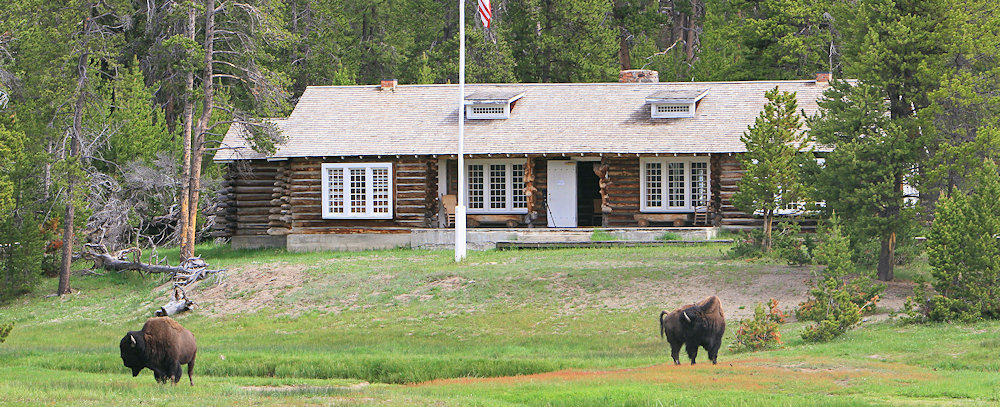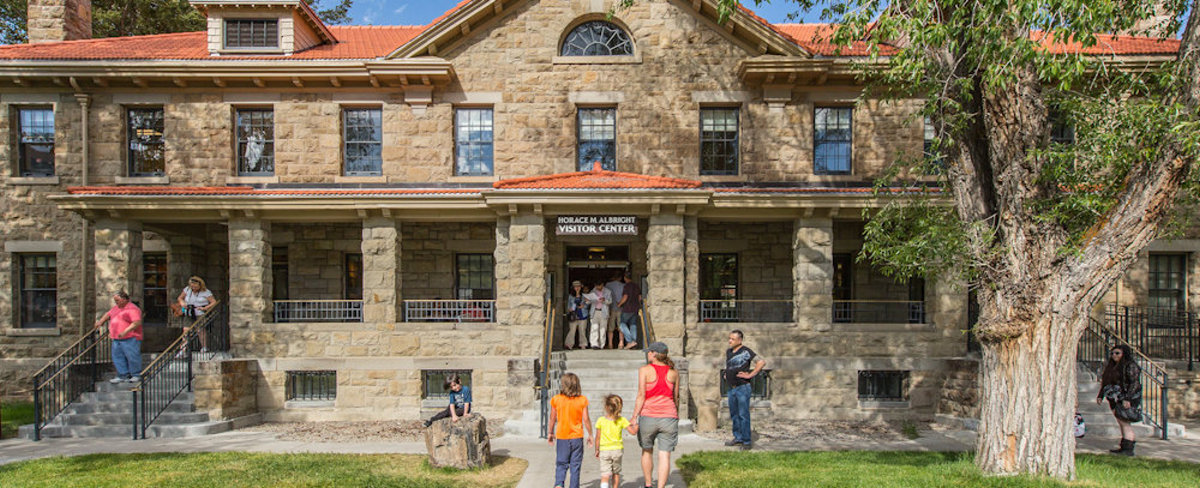The Albright Visitor Center and Museum (open 365 days a year) is located at Mammoth Hot Springs, five miles inside the North Entrance and at the northwest corner of the upper loop of the Grand Loop Road. The visitor center and all the red-roofed, many-chimneyed houses down the street from it were built by the U.S. Cavalry during a time when this was “Fort Yellowstone,” an Army post dedicated to protecting the national park. Although the soldiers left after the Park Service was created in 1916, outwardly the old fort has changed little from the time of Army residency. Fort

Yellowstone, comprised mostly of this block and the two rows of buildings behind it, is one of the best remaining examples of a 1900-era cavalry post.
The visitor center (formerly bachelor officers’ quarters) now houses a museum with its major theme being history: Native Americans (pre-1800), the mountain men (1807-1840), early exploration (1869-1871), the Army days, and early National Park Service. In early 1998, new exhibits with a predator-prey theme were installed upstairs.
Of special note are the Moran Gallery where fine reproductions of watercolor sketches by the painter and expeditioner Thomas Moran are displayed and the Jackson Gallery where original photographs by William Henry Jackson, also of the 1871 Hayden Survey, are exhibited.
There is a theater in the visitor center where Park Rangers show film and video presentations every half hour in summer and on request in winter. Films include The Challenge of Yellowstone(1979, 25 min) on the history of Yellowstone and the evolution of the national park idea and Thomas “Yellowstone” Moran (1997, 12 min) on Moran’s contribution toward the establishment of Yellowstone National Park and are shown year-round.
The Division of Resource Management and Visitor Protection operates a backcountry office inside the visitor center during the summer months. This office issues backcountry camping permits, boating permits, fishing permits, and general information.
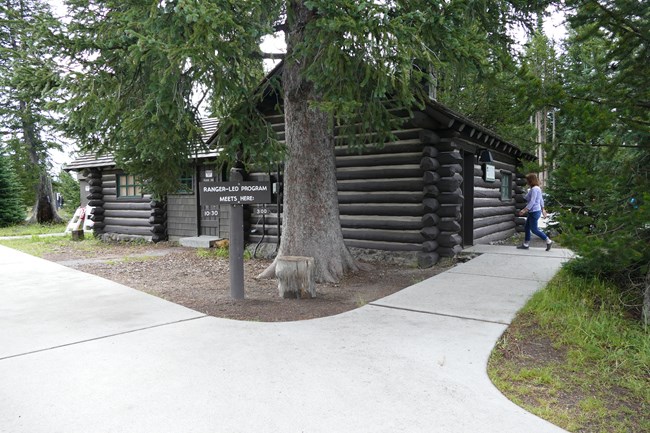
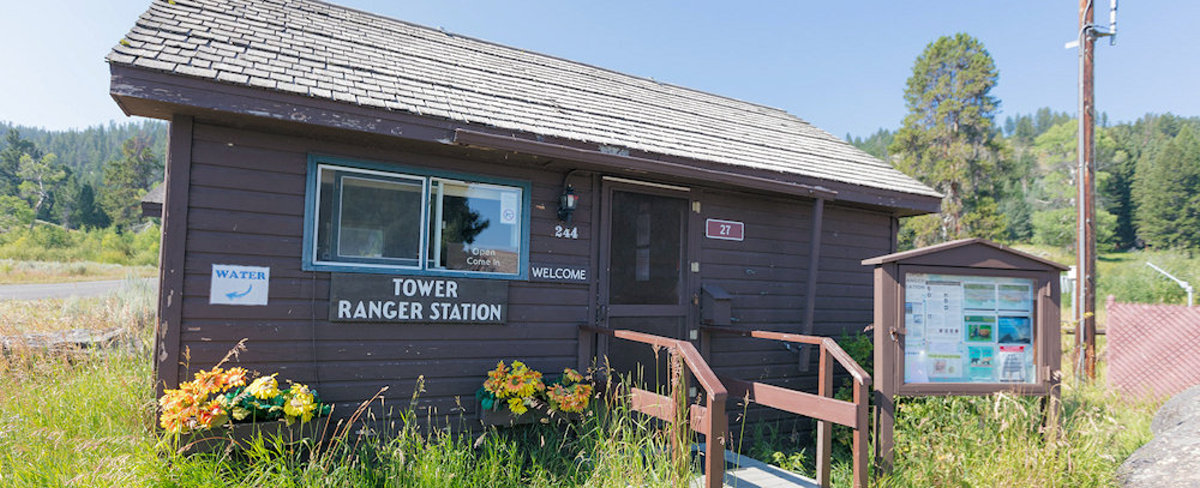

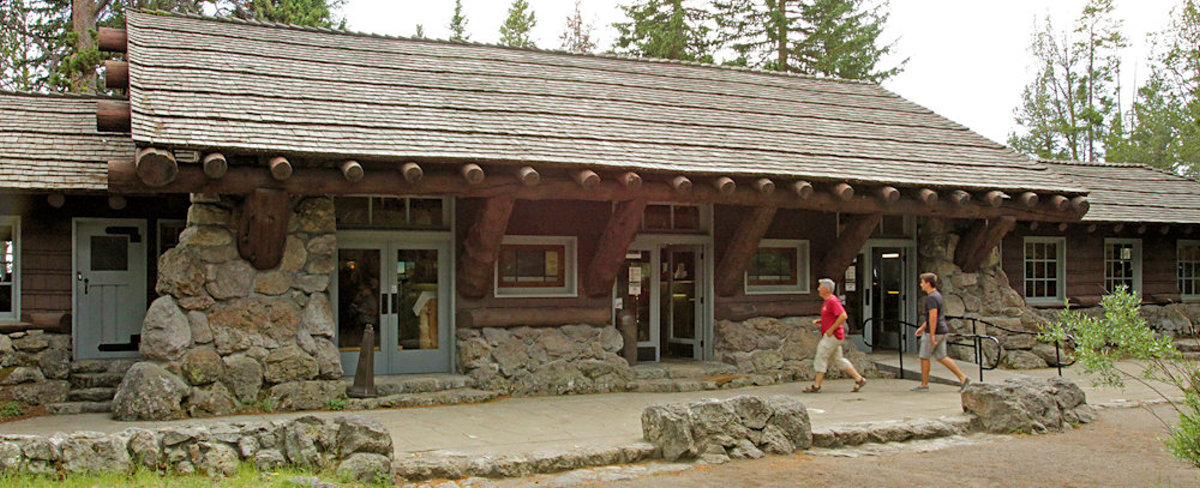
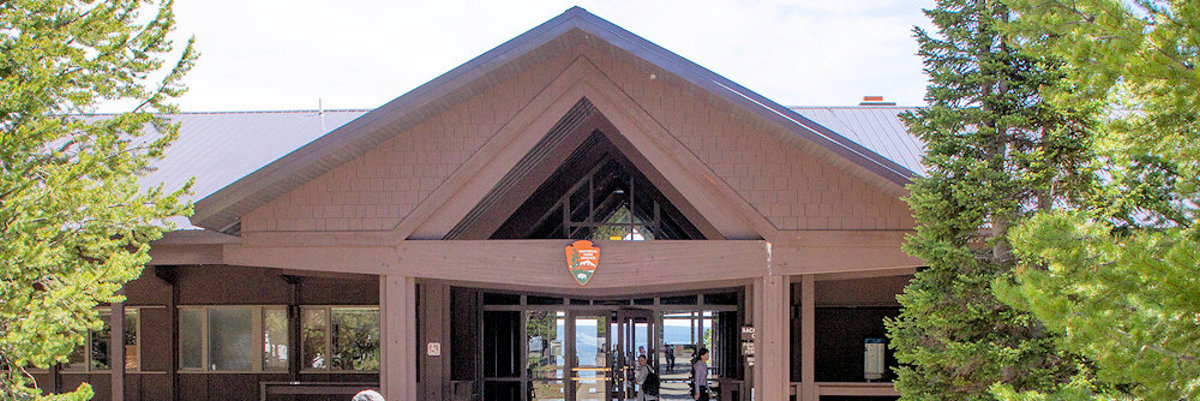

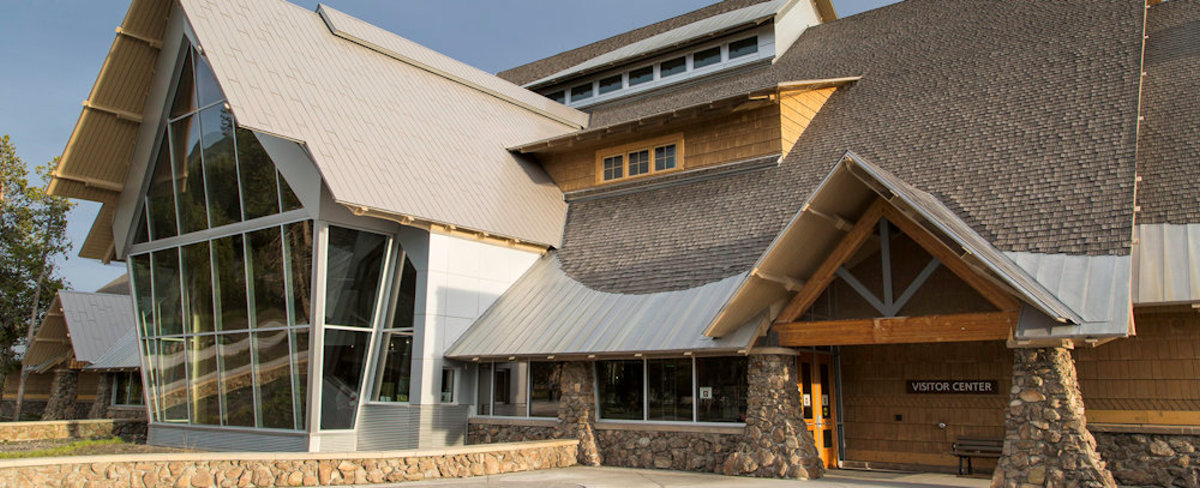
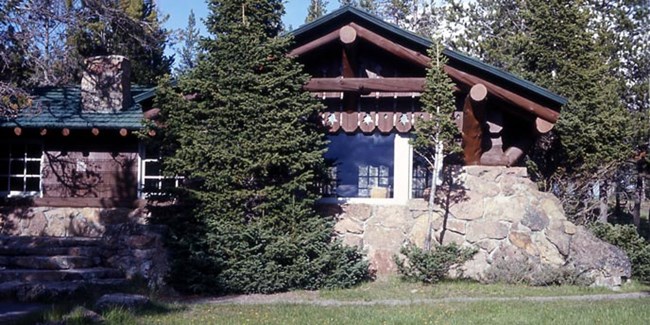
 The Madison Information Station dates from 1929-30 and is a National Historic Landmark. Located at Madison Junction in the Madison Picnic Area, it is built from wood and stone materials. The building sits near the site of the legendary campfire circle of the Washburn-Langford-Doane Expedition. Although no evidence can confirm the authenticity of this tale, the legend gives us a strong theme for discussion of the establishment of Yellowstone National Park. In previous years, this building has been used as a museum, has housed the Arts Yellowstone program, and has sat empty and abandoned. It began its new life as an information station and Yellowstone Association bookstore during the summer of 1995. The station contains only touch-table exhibits at present, but plans are underway to design and install orientation panels. A wayside exhibit just outside the building commemorates the “campfire story,” and a commemorative plaque honors Stephen T. Mather.
The Madison Information Station dates from 1929-30 and is a National Historic Landmark. Located at Madison Junction in the Madison Picnic Area, it is built from wood and stone materials. The building sits near the site of the legendary campfire circle of the Washburn-Langford-Doane Expedition. Although no evidence can confirm the authenticity of this tale, the legend gives us a strong theme for discussion of the establishment of Yellowstone National Park. In previous years, this building has been used as a museum, has housed the Arts Yellowstone program, and has sat empty and abandoned. It began its new life as an information station and Yellowstone Association bookstore during the summer of 1995. The station contains only touch-table exhibits at present, but plans are underway to design and install orientation panels. A wayside exhibit just outside the building commemorates the “campfire story,” and a commemorative plaque honors Stephen T. Mather.
